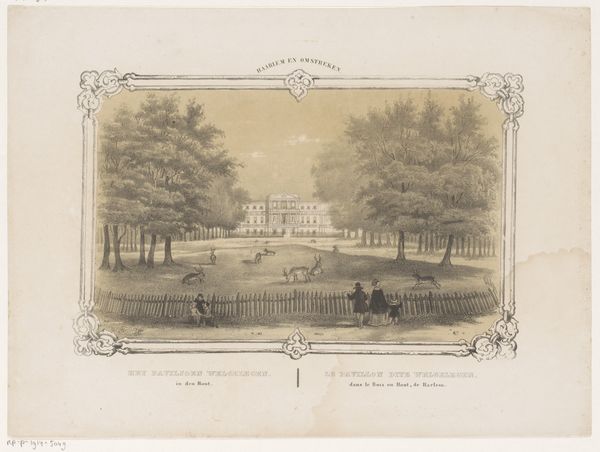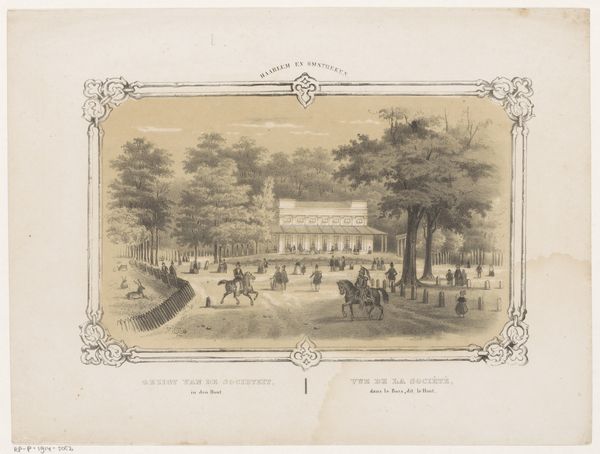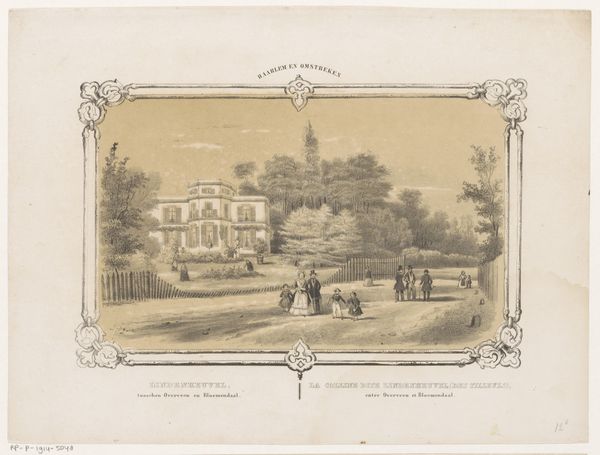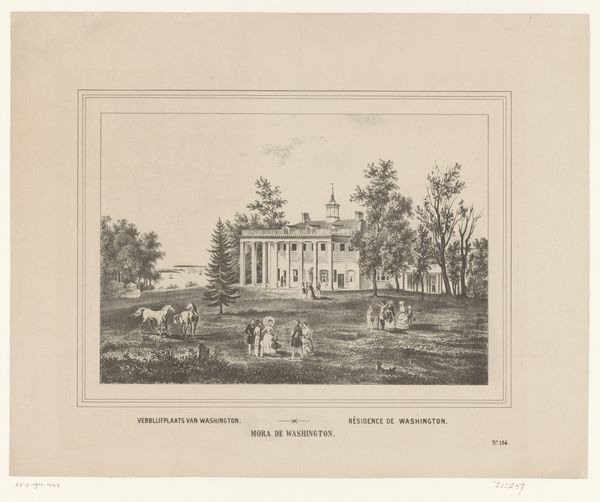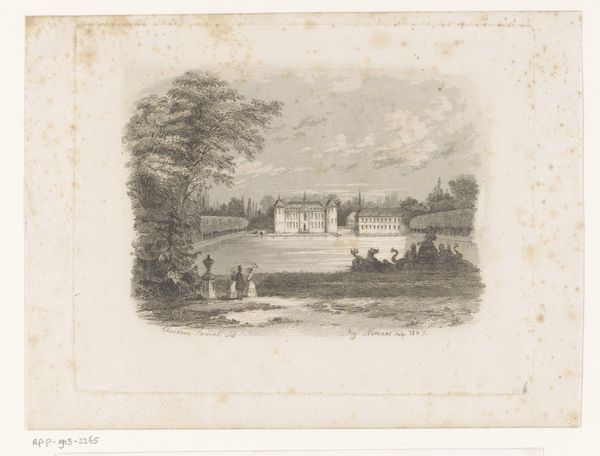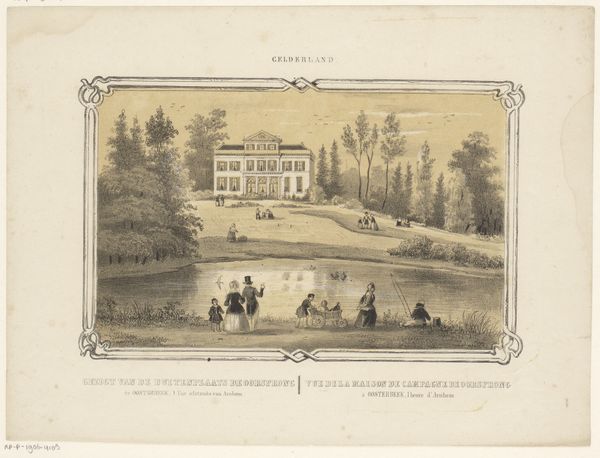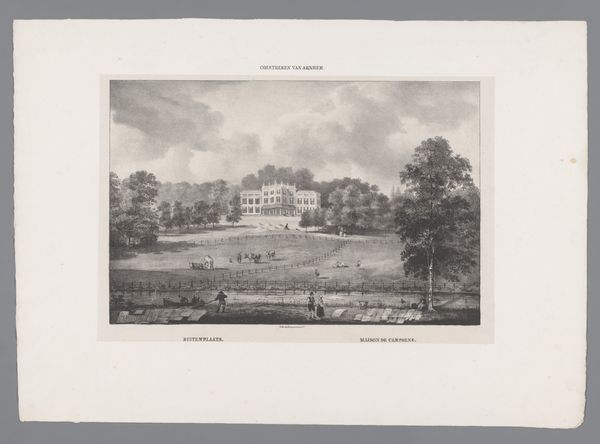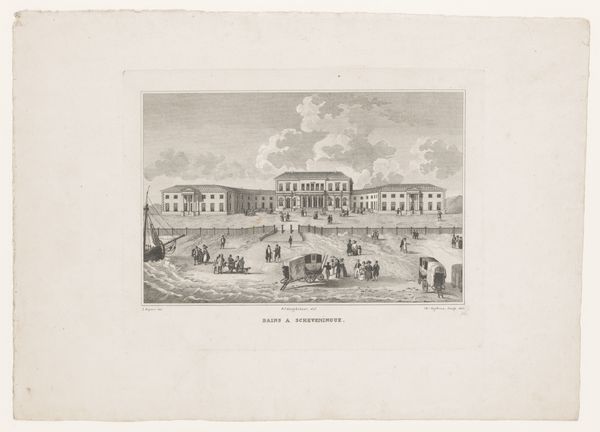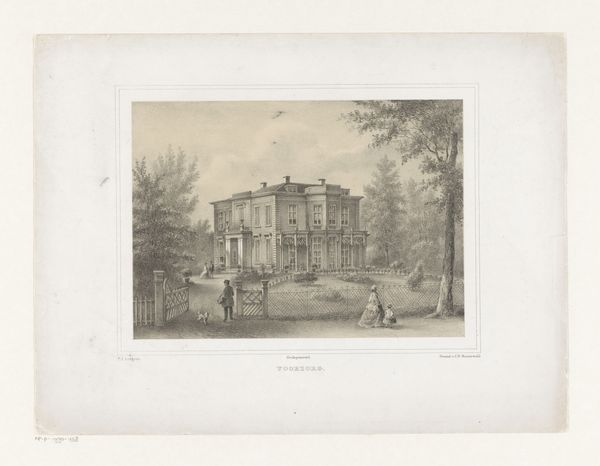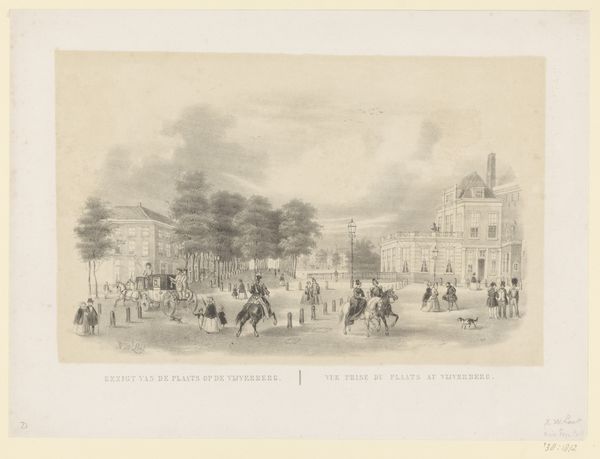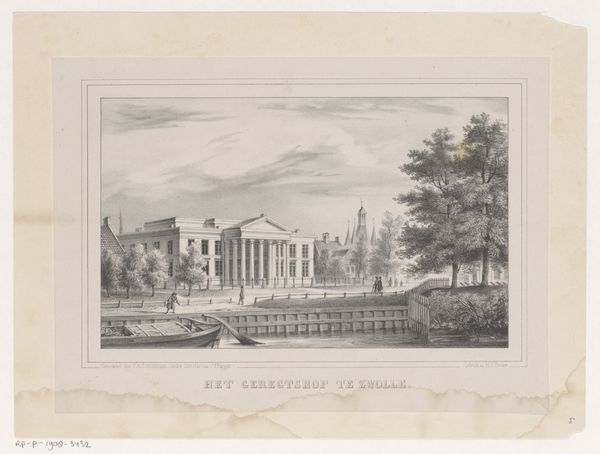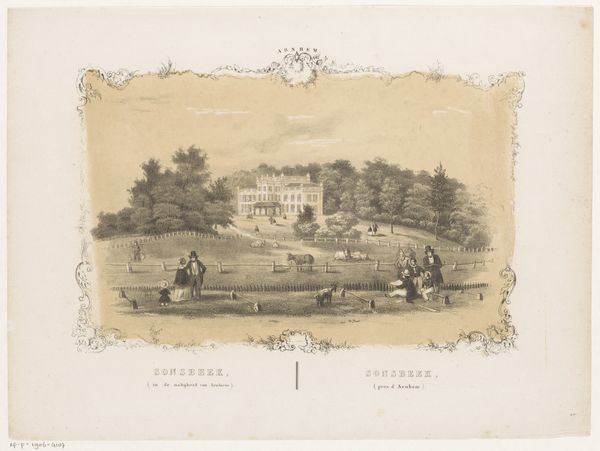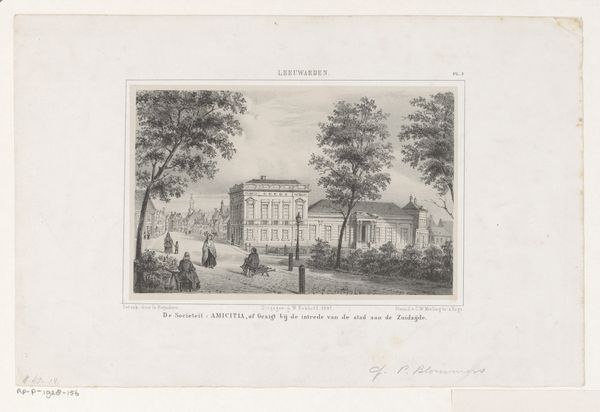
drawing, print, etching
#
drawing
# print
#
etching
#
landscape
#
etching
#
romanticism
#
cityscape
Dimensions: height 270 mm, width 358 mm
Copyright: Rijks Museum: Open Domain
Editor: This is "Gezicht op buitenplaats Bloemenheuvel," or "View of the Bloemenheuvel Estate," an etching by Hendrik Wilhelmus Last, likely made sometime between 1827 and 1873. It feels like a carefully constructed scene, a little idealized. What stands out to you in this piece? Curator: It's interesting to consider the perspective Last offers. This "view" is not just a depiction of the estate, but a constructed narrative about wealth, leisure, and the relationship between the landed gentry and the working class. Look at the figures in the foreground – they appear almost like props, their labor a subtle suggestion of the estate's opulence. Do you think Last is celebrating or critiquing this social hierarchy? Editor: That’s a great question. I hadn’t really thought about the social commentary aspect. I was more drawn to the romanticized depiction of the landscape itself, the harmonious blend of nature and architecture. Curator: But isn’t that romanticism itself a form of ideological positioning? By emphasizing harmony and beauty, it potentially masks the underlying power dynamics at play. Think about who owned this estate, who worked it, and whose stories are absent from this "view." What does it mean to showcase this perspective and for what audience? Editor: So, you're suggesting we read beyond the picturesque façade and consider the unspoken narratives within the print. The labouring figures were never truly part of the "leisure" so proudly shown, just cogs in its mechanism. Curator: Exactly! Consider how gender roles are also performed: who is shown 'strolling' or attending the estate and who is providing services to enable it? We must constantly examine how art participates in both reflecting and constructing social realities, particularly through the lens of Romanticism in this context. Editor: That's given me a lot to consider. Thanks for sharing your insights. I'll never be able to just look at landscapes the same way again! Curator: Wonderful! And that’s exactly why it's important to continuously challenge our perspectives, allowing us to uncover deeper truths hidden beneath the surface of even the most seemingly benign artwork.
Comments
No comments
Be the first to comment and join the conversation on the ultimate creative platform.
